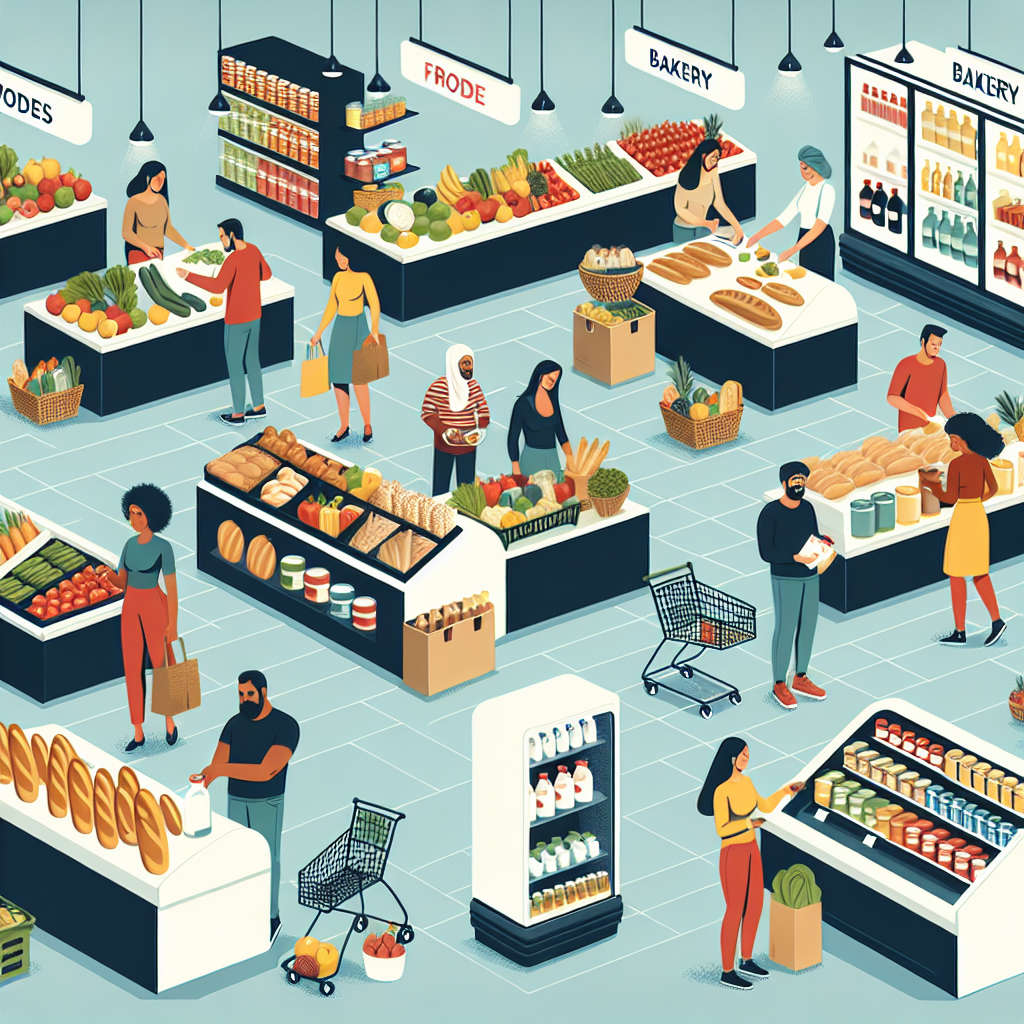The State of the Global Grocery Retail Industry in 2025
In 2025, the global grocery retail industry is experiencing significant shifts in consumer preferences and shopping habits. While big chains have traditionally dominated the market, there is a growing trend towards consumers preferring local grocery stores. This report will delve into the reasons why consumers are choosing local grocery stores over big chains and analyze the current state of the industry.
Consumer Preference for Local Grocery Stores
One of the primary reasons why consumers prefer local grocery stores is the personalized service and attention they receive. Local grocery stores are often smaller in size compared to big chains, allowing for a more intimate shopping experience. Customers can interact with store owners and staff who are knowledgeable about the products they sell and can provide recommendations based on individual needs.
Additionally, local grocery stores tend to carry a wider selection of locally sourced and organic products. This appeals to consumers who are increasingly conscious of where their food comes from and are looking for higher quality, sustainable options. By supporting local farmers and producers, consumers feel a sense of community connection and contribute to the local economy.
Furthermore, local grocery stores are often more convenient for consumers in terms of location and accessibility. They are typically situated in neighborhoods or town centers, making it easier for customers to walk or bike to the store. This convenience factor is especially important for busy urban dwellers who value quick and efficient shopping experiences.
Financial Performance of Local Grocery Stores vs. Big Chains
Despite the growing preference for local grocery stores, big chains still dominate the market in terms of revenue and market share. According to a report by CulinaryCoverage.com, the top global grocery retailers in 2025 include major players such as Walmart, Amazon, and Carrefour. These companies have significant economies of scale and purchasing power, allowing them to offer competitive prices and a wide range of products.
In contrast, local grocery stores may struggle to compete with big chains on pricing and product variety. However, they make up for this by focusing on niche markets and specialty products that appeal to a specific customer base. For example, a local organic grocery store may cater to health-conscious consumers looking for natural and sustainable food options.
In terms of financial performance, big chains typically have higher profit margins and revenues due to their larger customer base and operational efficiency. However, local grocery stores can still be profitable by targeting specific customer segments and building strong relationships with suppliers and customers.
Market Share and Growth Opportunities
While big chains continue to dominate the grocery retail industry, there are opportunities for local grocery stores to expand their market share. One key growth opportunity is the rise of online grocery shopping, which has become increasingly popular among consumers. Local grocery stores can leverage e-commerce platforms to reach a wider audience and offer delivery services to compete with big chains.
Another growth opportunity for local grocery stores is the trend towards sustainable and ethical consumerism. As more consumers become aware of the environmental and social impact of their purchasing decisions, they are seeking out retailers that align with their values. Local grocery stores can differentiate themselves by sourcing products from ethical suppliers and promoting sustainable practices.
Furthermore, local grocery stores can differentiate themselves through unique offerings such as prepared meals, cooking classes, and community events. By creating a memorable shopping experience, they can build customer loyalty and attract new customers who value personalized service and authentic connections.
Future Plans and Strategies
In order to compete with big chains and capitalize on consumer preferences, local grocery stores must adapt their business models and strategies. One key strategy is to invest in technology and digital marketing to enhance the shopping experience and attract new customers. This includes developing a user-friendly website, implementing online ordering and delivery services, and leveraging social media to engage with customers.
Additionally, local grocery stores can strengthen their relationships with suppliers and local producers to offer unique products and support the community. By partnering with local farmers and artisans, they can create a point of differentiation and appeal to consumers seeking authentic and sustainable food options.
Overall, the global grocery retail industry is undergoing significant changes as consumers increasingly prefer local grocery stores over big chains. While big chains continue to dominate the market in terms of revenue and market share, there are opportunities for local grocery stores to differentiate themselves and attract customers through personalized service, unique offerings, and ethical practices. By understanding consumer preferences and adapting their business models, local grocery stores can thrive in an evolving and competitive market landscape.



